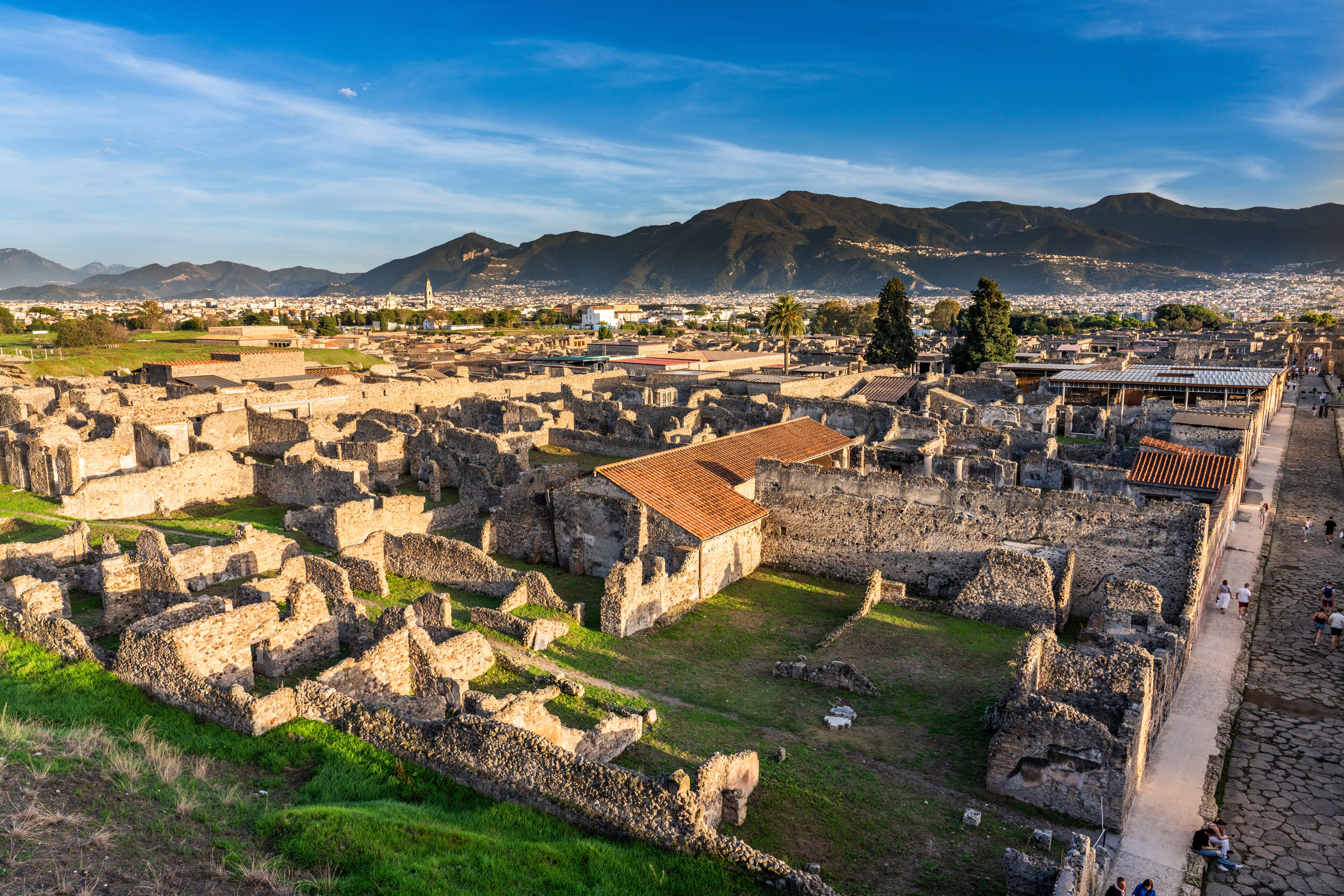Top Tourist Attractions in Herculaneum

Fornici
The Fornici were once the port warehouses along the ancient beach. In 1980, archaeologists unearthed 300 skeletons of residents who tried to escape the eruption. Alongside their remains, personal objects like jewellery and coins were found.
A Roman ship with the skeletons of a rower and a soldier, along with his belt, swords, chisel, and a purse with coins, were also discovered. This site offers a poignant reminder of the eruption of Mount Vesuvius in 79 AD.
-
House of Relief of Telephus
Built between 27 BC and 14 AD, this three-story house stands on a ridge overlooking the marina. It features sculptures from the Neo-Attic school, including a relief of Telephus, the son of Hercules, the city's legendary founder. The atrium is lined with columns and adorned with marble discs featuring reliefs of Dionysus, believed to ward off evil spirits.
-
House of the Wooden Partition
This house is named after its wooden partition that survived the eruption and still stands today. The folding door separated the atrium from the rest of the room, providing privacy. It features a series of folding panels with brass handles and holders for lanterns.
-
Samnite House
Dating back to the 2nd century BC, the Samnite House is one of the oldest in Herculaneum. It boasts a beautiful Greek-style atrium painted in the Fourth Style, known for its fantastical architecture and dramatic scenery. The house has a marble impluvium, or rainwater pool, and an upstairs loggia with Ionic columns.
-
Hall of the Augustals
This square structure was the seat of the College of the Augustales, devotees of the cult of Emperor Augustus. The hall features columns, arches, and cocciopesto floors. Two splendid frescoes depict Hercules entering Mount Olympus and wrestling the Achelous. The skeleton of the building's custodian was found in his quarters.
-
Terme Centrali (Central Baths)
The Central Baths, dating from the 1st century BC, were fully excavated in 1931. The baths are divided into areas for men and women. Visitors can walk through the apodyterium (changing rooms) and see the frigidarium (cold room), caldarium (hot room), and tepidarium. The tepidarium features a black and white mosaic of Triton surrounded by sea creatures and a cupid.
-
Sacello degli Augustali
This large square shrine was originally dedicated to Hercules, the patron of Herculaneum, and later to the Imperial cult of the Augustales. It features excellent frescoes, including one showing Hercules in Olympus with Juno and Minerva, and another of Hercules fighting an Etruscan god.
-
House of the Skeleton
This house got its name because a skeleton was found on the upper floor during excavations. Today, only the ground floor remains, but visitors can still see frescoed walls and mythically themed mosaics, though many are faded.
-
House of the Deer
At the southern end of Cardo V, the House of the Deer is a luxury villa with two stories built around a central courtyard. The house features marble-chip and mosaic floors and frescoed walls. The garden once held marble tables and deer statues, now preserved in the on-site museum. Next to it is the House of the Mosaic Atrium, with an unusual room divided into three naves, unique to Herculaneum.
-
House of Neptune and Amphitrite:
This grand villa is named after the Roman sea god Neptune and his wife Amphitrite. The lower floor had a shop with a counter, a small kitchen, and a wooden mezzanine floor still visible today. The mezzanine had a shelf likely used to store wine amphorae.
The house's main attraction is the summer triclinium, a garden used as a dining area. In the centre, there is a marble basin with a fountain. The central wall has a stunning mosaic of Neptune and Amphitrite, framed with seashells and made of bright glass paste. This house likely belonged to a wealthy, art-loving merchant.
Best Tours

-
Herculaneum Guided Tour
Join a guided tour of Herculaneum to explore this ancient city with an expert. The tour guides will take you through the main attractions and share fascinating stories about the city's history. Tours are available daily, with multiple time slots to suit your schedule.
-
Herculaneum Walking Tour with an audio guide
Explore Herculaneum on a guided walking tour with an audio guide. Stroll through ancient streets and marvel at well-preserved ruins. Learn about daily life in this Roman city as you listen to fascinating stories. Perfect for history lovers and those eager to discover the past.
-
Herculaneum Private Guided Tour
For a more personalized experience, book a private guided tour. You will have a dedicated tour guide to lead you through Herculaneum, allowing for a customized itinerary and more in-depth exploration. Ideal for families and small groups.
-
Herculaneum ruins Small Groups tour
The small group tours offer an intimate experience with a maximum of 10 participants. This allows for more interaction with the tour guide and a closer look at the archaeological site. Book early to secure your spot.
-
Pompeii and Herculaneum Tour with Archaeologist
Combine your visit to Herculaneum with a tour of Pompeii, guided by a professional archaeologist. Learn about the differences between these two ancient cities and gain a deeper understanding of their histories. This full-day tour includes transportation and skip-the-line tickets.
Herculaneum Tickets

Planning to visit Herculaneum? Here's what you need to know about ticket prices:
-
Full Price (until June 30th, 2024): €13
-
Full Price (from July 1st, 2024): €16
-
Reduced Price: €2 (with valid ID for qualifying categories)
Additionally, there are free admission days on the first Sunday of each month and on specific national holidays. You can find details about these on the official website.
Herculaneum, a day trip from Naples, offers a unique glimpse into ancient Roman life, better preserved than Pompeii.